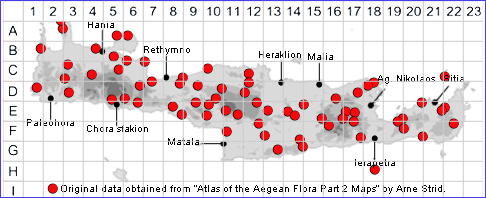
SPECIES DESCRIPTION
FILAGO PYGMAEA
Family:- COMPOSITAE
Common Names:- Pygmy cudweed
Synonyms:- Evax pygmaea, Gnaphalium pygmaeum, Micropus pygmaeus.
Meaning:- Filago (L) Thread.
Pygmaea (Gr) Dwarf.
General description:- Tiny grey-felted annual, to 4 cm only, often branched at the
base.
Stem:-
1) 2-4(-5) cm.
Leaves:-
1) Cauline, 7-10 x 3 mm.
2) Rosette, somewhat rigid 5-15 x 2-5 mm, 2-3 times as long as the cluster,
oblong-obovate, rounded, obtuse or shortly acute, patent.
Flowers:-
1) Clusters of capitula 5-35 mm wide, very compact, subglabrous.
2) Involucral bracts (3-)4-4·3 x 1·5-1·8 mm, lanceolate-obovate to obovate, straight
on the back, glabrous, brownish-yellow, cuspidate with arista, c. 1 mm.
Fruit:-
1) Achenes, 1·2-1·4 mm, dark brown, glabrous, non-feathery, tuberculate, hard on
the edges.
Key features:-
1) Rosette-leaves 5-16 x 2-5 mm.greyish-green, somewhat rigid, not narrowed into a
long, sheathing petiole, patent, 2-3 times as long as the clusters of capitula.
2) Involucral bracts 3-4·3 mm, with arista 1-1·5 mm.
3) Achenes sparsely hairy or subglabrous.
4) Lateral branches short, ascending; indumentum whitish.
Habitat:- Sandy coastal habitats, soil pockets in open dry shrubby vegetation on
rocky hillslopes, compacted soil along roads and tracks, fallow fields. 0-400 m.
(sometimes to 1200 m.).
Distribution:- Coastal areas of W. mainland Greece. - S.Europe, Libya and W
Anatolia. Fairly widespread and common on Crete.
Flowering time:- End of Mar to mid-June
Photos by:- Steve Lenton
